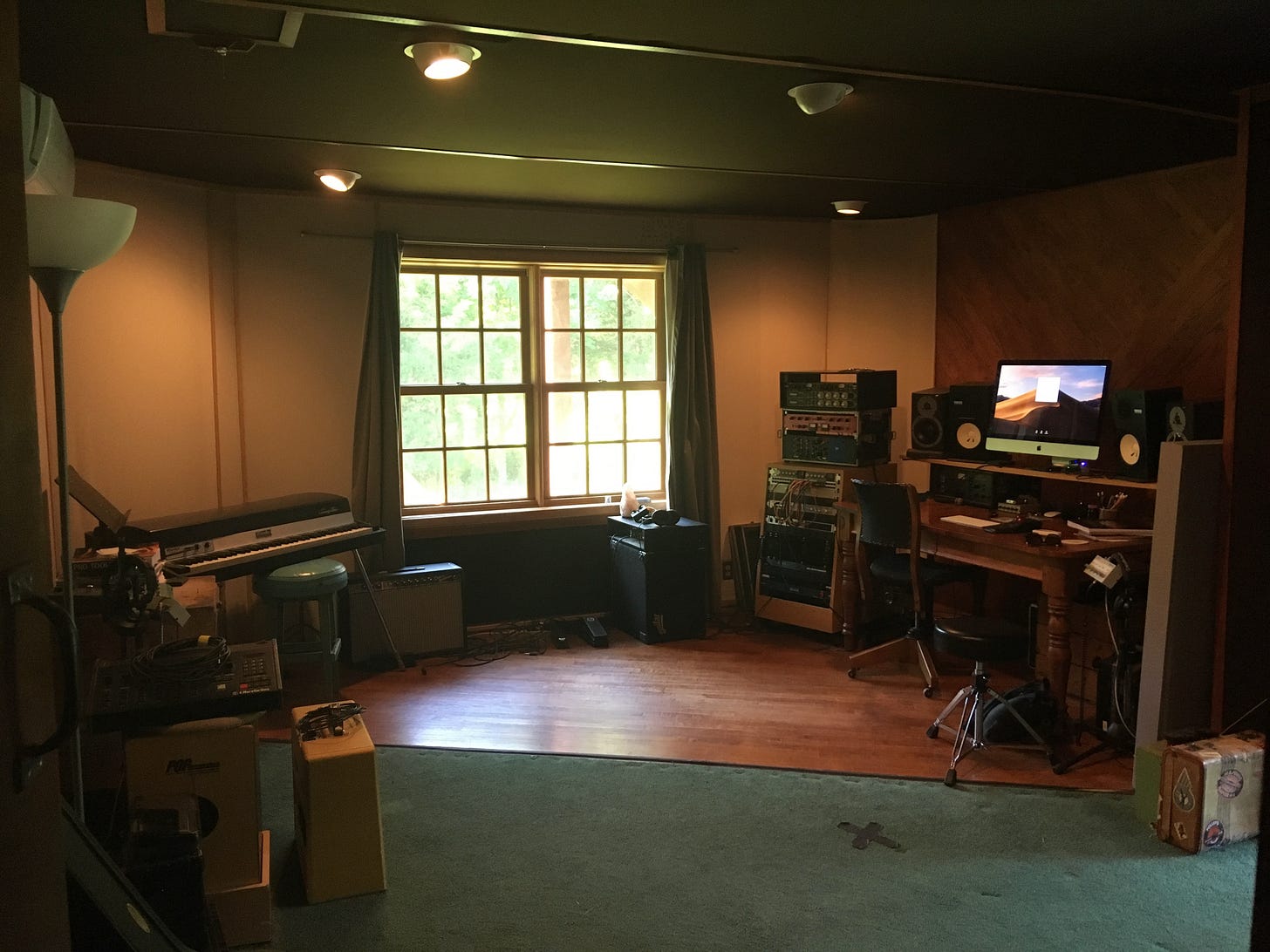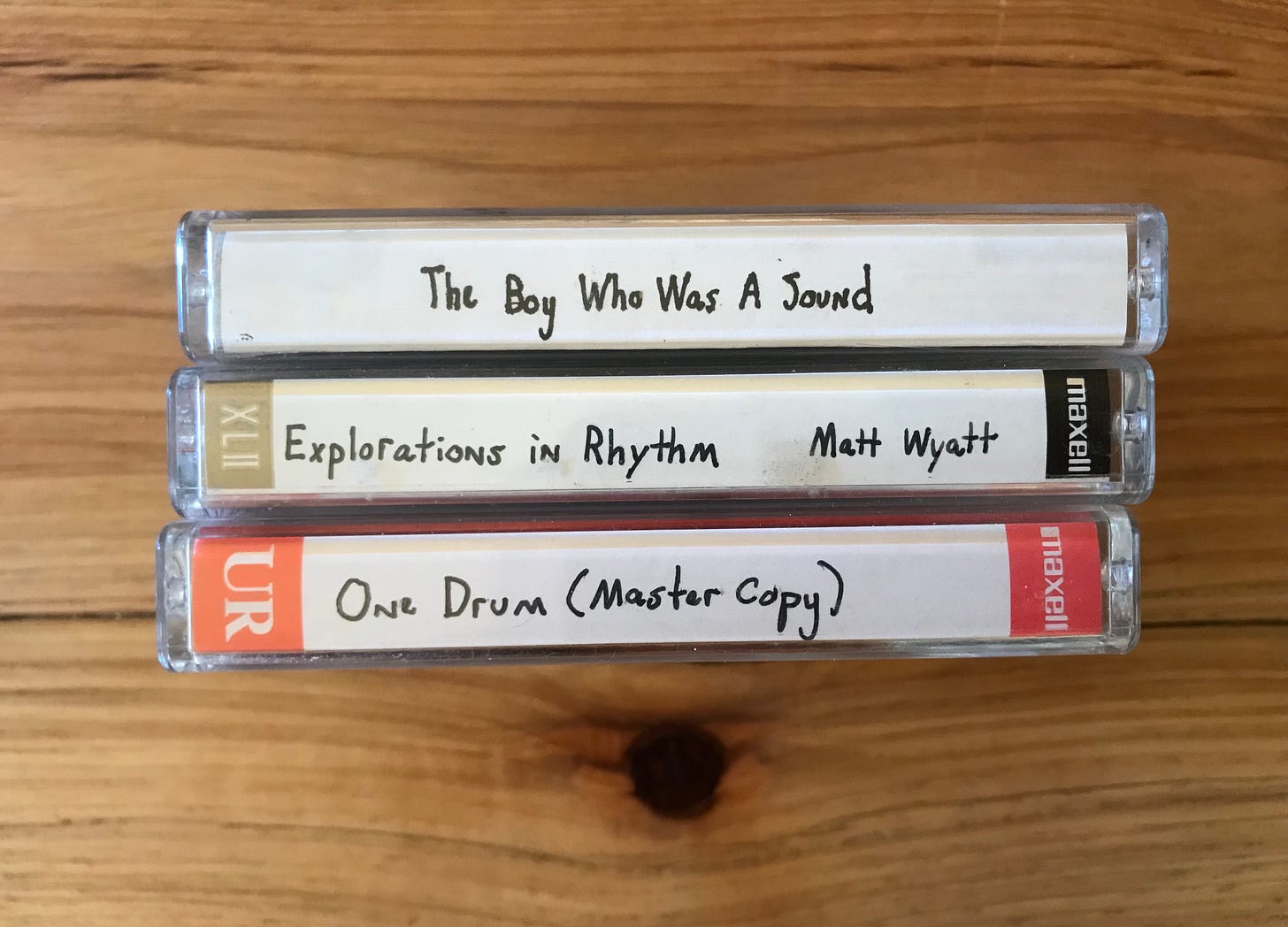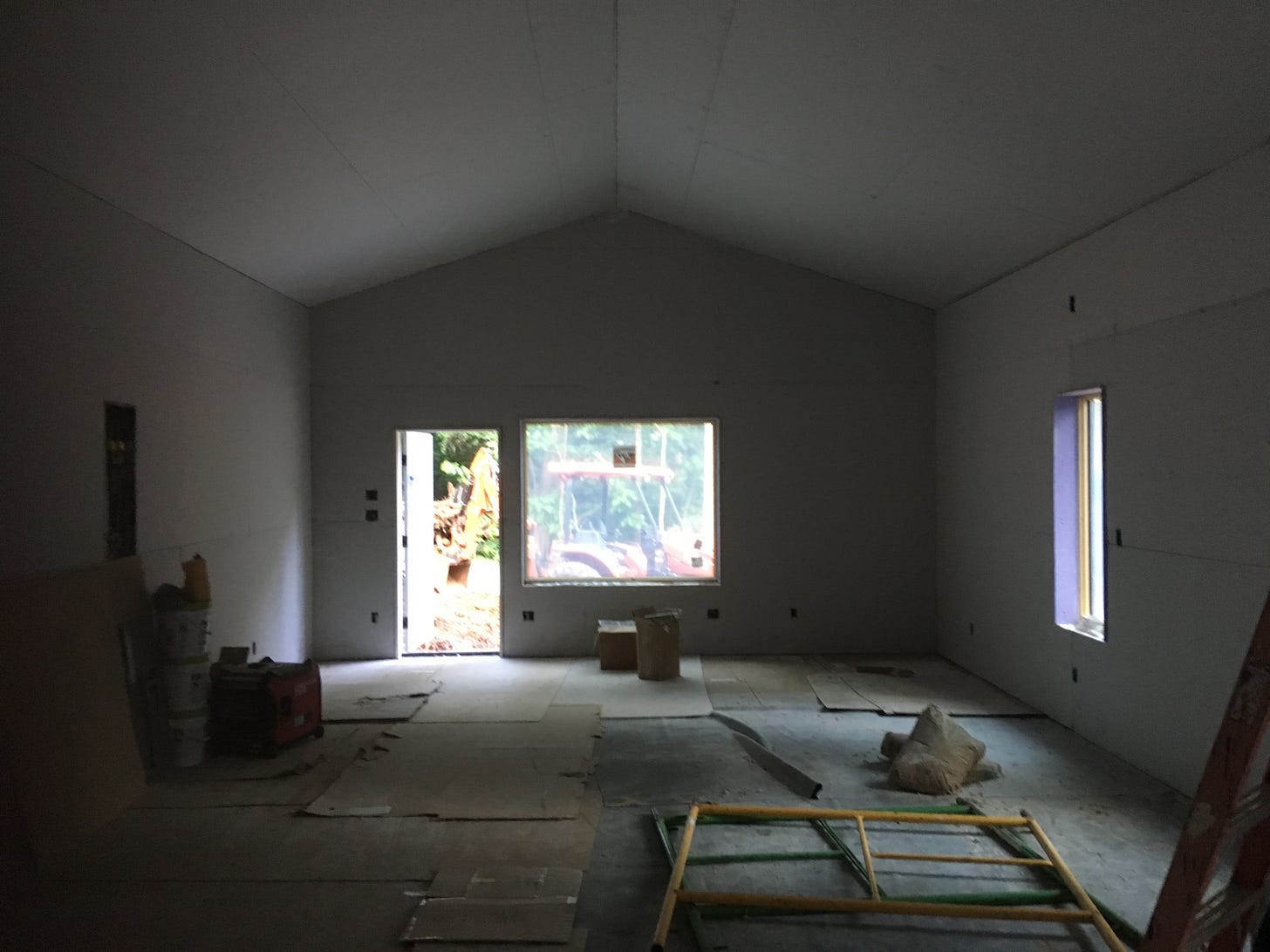The previous studio that I rented and worked in was a 350 square foot space subdivided into a main room, an isolation booth, a small entryway, and a closet. The walls were covered with brown speaker cloth over foam insulation with no drywall between them. There were two windows facing a stretch of field with woods beyond it. The windows had bars over them. The ceilings of the studio were around 7 feet and natural light was minimal. The walls had been wired with microphone cabling and there was a studio window between the main room and isolation booth for sight lines between the small rooms. By most accounts, this space felt pretty oppressive, all the more so because it had gone largely unused for the prior decade or more before I moved. But it was affordable, private, situated in a beautiful rural area, and had an apartment above it where I could live. As a full-time working musician scraping by with income from gigs, teaching, and recording, stumbling into this type of space in my late 20’s was a huge win.
When I moved into the space it was a disorganized mess, essentially a storage unit left too long unconditioned in Virginia, its air funky and its interior neglected. That said, I found charm in the space in the sense that it was quiet, cozy, and had music in its bones. Part of the deal with my renting the studio included its rehab, breathing life back into it. Over time I added some acoustic treatment to manage bass frequencies, removed the bars from the windows, covered the brown speaker cloth with white fabric to brighten it up. And because rent was very cheap it enabled me to survive on musician income while also squirreling some money away for what would become the studio I work in now. What mattered to me was that there was some separation between studio and home, however minimal, and that I could count on the studio conditions to be sonically reliable to the work I wanted to do. Regarding both desires, this humble space succeeded wildly. And I lived and worked there for a decade.
Before moving into this space I had previously outfitted a 2 bedroom rental house where I also lived with a small, computer-based recording rig, a handful of mics, and some borrowed acoustic panels. Here I primarily recorded and mixed my own music, although toward the end of my time in this house I began to record other artists as well, landing my first gigs as an engineer for hire. I brought in a friend who had gone to school for music engineering to offer some input on the acoustics. I managed road noise. I often worked very late into the night with no concern for bothering anyone. This era marked the start of my recording other musicians although my first endeavors with recorded sound had come about a decade earlier, when I was a teenager.
Beyond the inevitable growing pains of teen years, my life experience at that time was defined by the uniquely challenging context of family alcoholism. This topic could yield a lifetime of writing on its own but its relevance here is to note that a positive side effect of trying family times was that I began to consciously develop a deep relationship with music, sound, and poetry. These art forms became an escape, a refuge from the family noise, a space for imagination to stretch, a venue to express (through playing and writing) or to experience (through listening and reading) emotions otherwise not quite suited to the home context at hand. And importantly to what has become my life’s work in the recording studio environment, it was in this time I began to record onto a four track cassette.
For years my dad had worked at home in a small office off our garage. Sometime in my teens he moved his office out of the house and I was able to convert this walk-in closet sized room into my first “studio.” It had a concrete floor, one window, and a ceiling height of about 10 feet. It was just big enough to fit a drum set, a bassist, and a guitarist. I somehow heard about acoustic tiles like those used in office buildings and we tracked down an office building being renovated. My dad drove me to intercept a few dozen ceiling tiles otherwise destined for the dumpster. These tiles became my first attempt at acoustic treatment as I hung them on each of the four walls in this garage studio. They warmed and softened the sound and with the one or two cheap mics that I owned, I started to record. I made albums that I released as cassette tapes that I then gave to a handful of friends. These albums featured spoken word poems I had written, readings from books I was into at the time, field recordings, percussion, drum solos. Without knowing it, I started to develop my engineering and production sensibilities, as well as my awareness of the impact of room acoustics on recording. When I released my first solo album in 2020 (Boom & Bloom: Part 1), I realized that effectively it was the exact same stuff I was doing as a teenager. I guess I found my palette early.
Top commercial recording studios are highly specific rooms designed by acoustic and architectural specialists and built with enough unconventional construction details to drive the price up to the sky. As I started to gather ideas about how I wanted to build the studio where I now work, Tree & Booms, and what I could afford, it became clear that the path of acoustic architects was not an option for me. I based the ideas of what I wanted and needed in a studio on my own past rooms, those mentioned above, as well as more official commercial studios where I had recorded as a drummer or worked as an engineer. This process of designing a recording studio was fraught with the same comparisons, fears, and concerns around how I was spending money that I reference in a previous post, The Arms Race of Recording Equipment.
The thing about working in sub-par recording environments is that they function like boot camp for your knowledge of acoustics. When you work in a bedroom or a small, padded, near windowless tracking room with 7 foot ceilings, moving a microphone six inches one direction or another really made a noticeable difference. Water pipes matter. Footsteps above matter, as does road noise. The position of your studio speakers for monitoring can be something of a nightmare when you do the visually obvious thing of crowding your desk against a wall or corner in a small room so you’re forced to either learn your speakers very well or start to adapt to all the inconvenient visual and spatial impacts that tend to result from the pursuit of recorded sound. Drums can sound and feel oddly hollow due to phase cancellations resultant from a sheer lack of room volume or lack of acoustic treatment. I was bothered and infuriated by these type of details for many years but it was this same experience that helped me to clear conclusions about how I wanted to design the studio where I now work.






Loving the history. I also remember a house prior to Free Union but I guess that was a combo music space/living space and not what you'd call a studio? The house on the road to Monticello? I used to record a lot of my ideas in the back seat of my car (1986--I think-- Pontiac Grand Am) because I could practice singing at the top of my lungs, play acoustic loudly, at all hours of the night and unless you were standing next to the car you wouldn't hear me, which is a favor for which I still feel the world owes me. Ha.
I hope the future portion of this studio series includes the release of your new album. Just sayin'. I'm going to start bugging you on the regular.